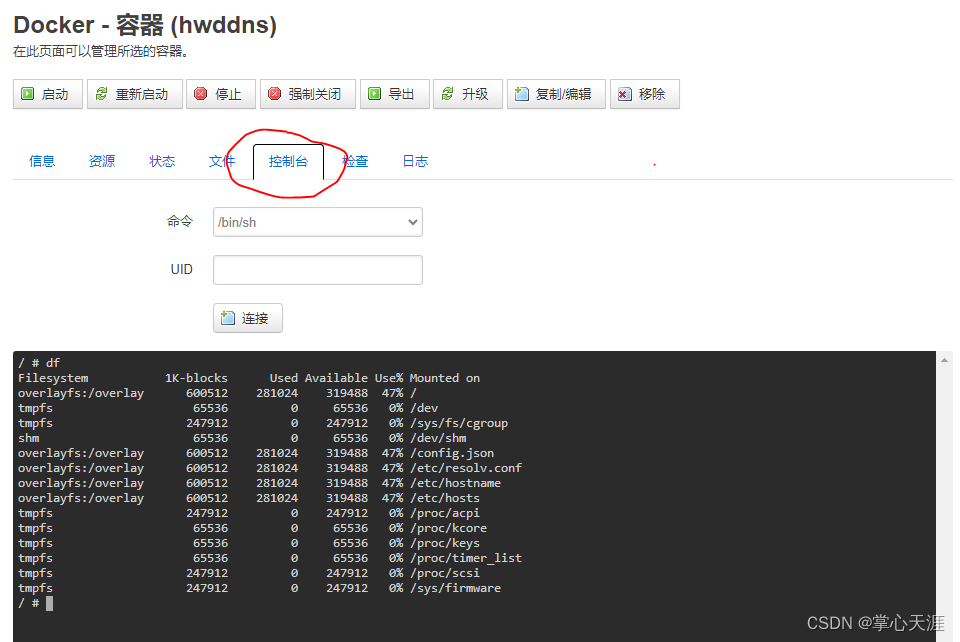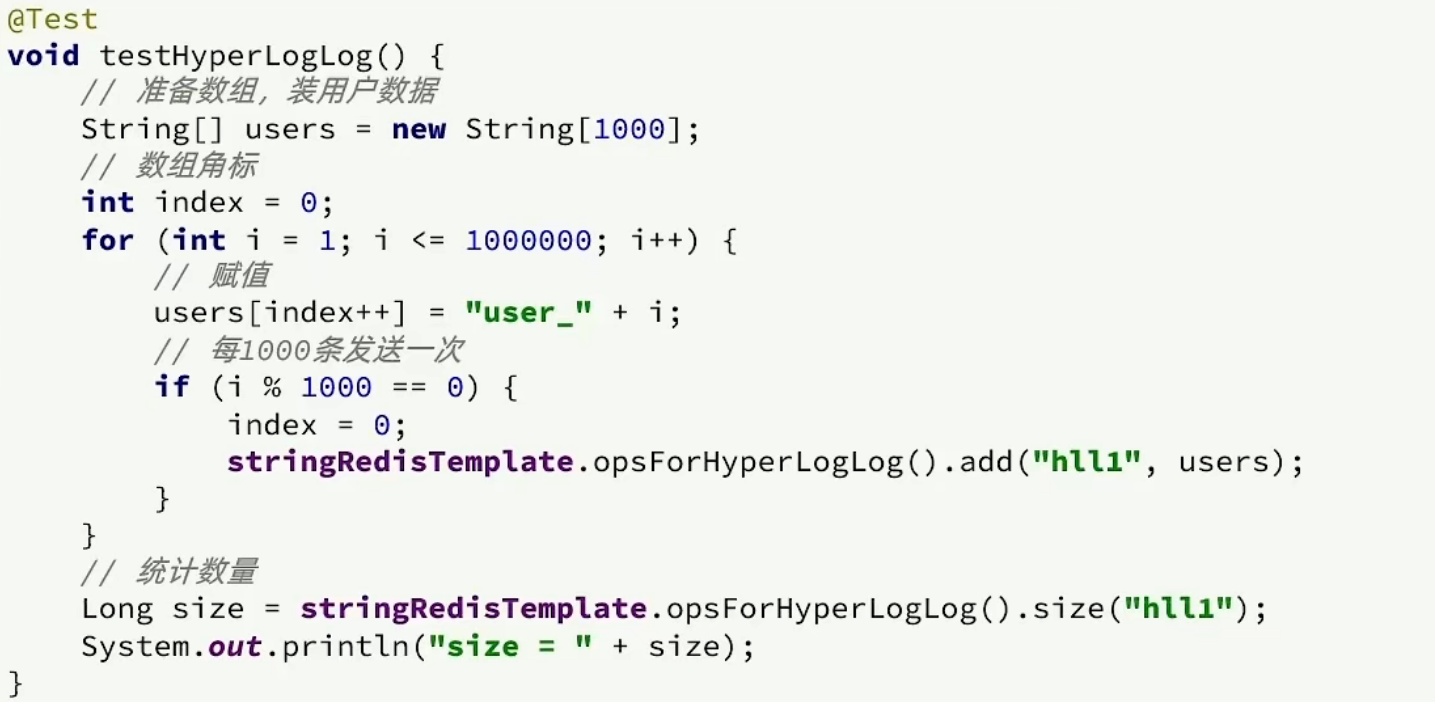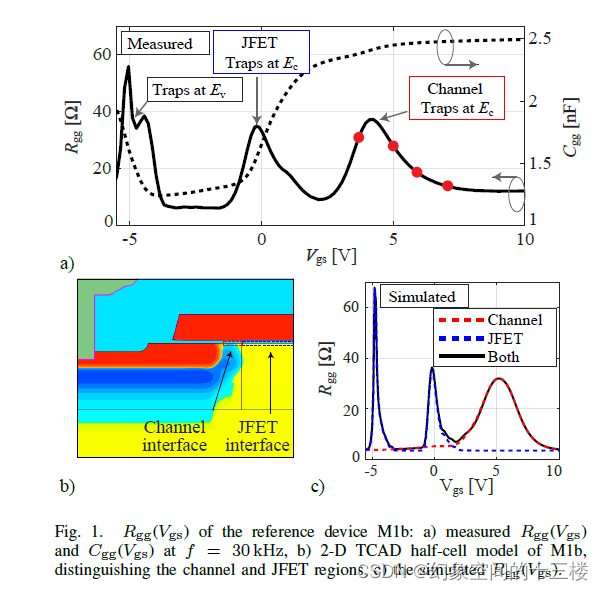✨个人主页: 北 海
🎉所属专栏: C++修行之路
🎃操作环境: Visual Studio 2019 版本 16.11.17

文章目录
- 🌇前言
- 🏙️正文
- 1、哈希表的完善
- 1.1、拷贝与赋值
- 1.2、优化:哈希函数
- 1.3、优化:素数大小
- 1.4、新增:迭代器类
- 2、封装实现 unordered_set 和 unordered_map
- 2.1、解决 k/v 参数冲突问题
- 2.2、解决 key 的获取问题
- 2.3、解决 unordered_set 迭代器非法操作
- 2.4、调整函数返回值
- 2.5、unordered_map 新增 operator[ ]
- 3、性能测试
- 4、源码
- 🌆总结
🌇前言
关于哈希表的两种实现方法:闭散列、开散列 已经在上一篇文章中学习过了,闭散列 存在 踩踏 问题,十分影响效率,因此在实践中往往会选择更加优秀的 开散列,哈希表(开散列)又叫做 哈希桶,作为被选中的结构,我们需要对其进行改造,完善哈希桶,使其最终能封装出 unordered_set 与 unordered_map

🏙️正文
1、哈希表的完善
1.1、拷贝与赋值
单链表 是我们自己写的,其中涉及到了 动态内存管理,这就意味着除了要自己释放内存外,还需要给出 深拷贝 版的 拷贝构造 与 赋值重载 函数
//默认构造
HashTable()
:_table()
,_n(0)
{}
//拷贝构造
HashTable(const HashTable& ht)
:_table()
,_n(0)
{
//开辟空间
_table.resize(ht._table.size());
//遍历插入节点
for (auto node : ht._table)
{
//遍历桶中的元素
Node* cur = node;
while (cur)
{
Insert(cur->_kv);
cur = cur->_next;
}
}
}
//赋值重载(现代写法)
HashTable& operator=(HashTable ht)
{
//直接交换 _table 与 _n
_table.swap(ht._table);
_n = ht._n;
return *this;
}
注意: 提供了 拷贝构造 之后,就得提供 默认构造函数
1.2、优化:哈希函数
在实际使用中,往往需要以 字符串 作为存储依据(键值),比如 姓名 与 快递信息 、商品名称 与 价格、中文单词 与 英文释义
总之,字符串是一种非常常见的数据类型
而在我们实现的哈希表中,只考虑 整型 的存储情况,即直接用 key % capacity 计算哈希值,如果把整型换成 字符串 是会出问题的
比如在下面这个场景中,程序无法编译


为了解决这个问题,我们可以将 获取 key 值 单独封装为一个 仿函数,再利用 模板特化,使其既能支持 整型 也能支持 字符串
//获取 key 值的仿函数
template<class K>
struct GetKey
{
size_t operator()(const K& key)
{
//此时为整型,直接返回即可
return key;
}
};
//模板的特化
template<>
struct GetKey<string>
{
size_t operator()(const string& key)
{
//根据字符串,计算出数值并返回
size_t val = 0;
for (auto e : key)
val += static_cast<size_t>(e);
return val;
}
};
添加了这个仿函数之后,就需要对 哈希表 中所有需要获取 key 的地方进行修改

此时 哈希表 中的键值可以正常存储 字符串

三个字符串计算出的值分别为:1407、1956、1344
这是在 字符串长度不一且字符相差过大 的情况下计算出来的,假若 字符串过短或者字符串较为接近,可能会计算出 相同的值,这会导致 哈希冲突
因此,单纯的累加每个字符的 ASCII 码值显得不够专业
有人专门对 字符串 进行研究,搞出了各种各样重复率较低的 字符串哈希算法
字符串哈希算法

在众多 字符串哈希算法 中,BKDRHash 一骑绝尘,各方面都非常优秀,因此这里我们选择 BKDRHash 算法作为 计算字符串值 的函数

BKDRHash 的核心就是 在原来值的基础上 * 131,再加上字符的 ASCII 码值
//模板的特化
template<>
struct GetKey<string>
{
size_t operator()(const string& key)
{
//根据字符串,计算出数值并返回
size_t val = 0;
//BKDRHash
for (auto e : key)
val = val + 131 + static_cast<size_t>(e);
return val;
}
};
修改之后,三个字符串计算出的值分别为:3634、5100、3702
显然此时的值更为分散,符合我们的需求
关于
static_cast<>
- 这是
C++中提供的类型转换函数,static_cast<>相当于C语言 中的 隐式类型转换,这样写的话更加规范,让别人一眼就能看出这里发生了 隐式类型转换
1.3、优化:素数大小
使用除留余数法时,哈希表的大小最好是素数,这样能够减少哈希冲突产生的次数
SGI 版 STL 中,哈希表 在扩容时就使用了这一技巧

简单来说,就是当我们扩容后,按照 下一个素数值大小 进行扩容
这些素数都是近似 2 倍的大小关系,在确保不会频繁扩容的同时,尽可能减少哈希冲突
所以需要这样一个函数
//获取素数
size_t GetNextPrime(size_t prime)
{
//返回当前位置的下一个素数值,作为扩容后的空间大小
// SGI版
static const int __stl_num_primes = 28;
static const unsigned long __stl_prime_list[__stl_num_primes] =
{
53, 97, 193, 389, 769,
1543, 3079, 6151, 12289, 24593,
49157, 98317, 196613, 393241, 786433,
1572869, 3145739, 6291469, 12582917, 25165843,
50331653, 100663319, 201326611, 402653189, 805306457,
1610612741, 3221225473, 4294967291
};
for (int i = 0; i < __stl_num_primes; i++)
if (__stl_prime_list[i] > prime)
return __stl_prime_list[i];
return __stl_prime_list[__stl_num_primes - 1]; //返回最后一个值
}
同样的,需要对 扩容 的地方进行改造

在改造之后,哈希表 的初始大小变为 53
1.4、新增:迭代器类
哈希表 中理应提供一个 迭代器 对其中的值进行判断,因为 桶 是一个 单链表,只能向前走,不能回头,因此我们的 迭代器 要设计为 单向迭代器(只支持 ++)
关于多模板参数 template<class K, class V, class Ref, class Ptr> 的设计原理这里不再阐述,感兴趣的可以看看这篇文章:《C++ STL学习之【list的模拟实现】》

//迭代器类
template<class K, class V, class Ref, class Ptr>
struct HashTableIterator
{
typedef HashNode<K, V> Node; //迭代器中元素
typedef HashTableIterator<K, V, Ref, Ptr> Self; //迭代器自己
HashTableIterator(Node* node)
:_node(node)
{}
//基本功能
//获取值
Ref operator*()
{
return _node->_kv;
}
//获取指针
Ptr operator->()
{
return &(operator*());
}
//判断逻辑
bool operator==(const Self& it)
{
return _node == it._node;
}
bool operator!=(const Self& it)
{
return !(*this == it);
}
//++ 的实现
Node* _node; //迭代器
};
关于 迭代器类 比较麻烦的就是 operator++()
先来说说移动逻辑:
- 如果当前所在桶中还有数据,简单,直接移动至
_next即可 - 如果没有数据(为空),就比较麻烦了,需要移动至当前哈希表中,下一个有数据的桶
显然,需要用到 哈希表,并且是 同一个哈希表
解决办法:构造迭代器时,传递当前哈希表的地址,构造一个指针指向哈希表
如何在 哈希表 中进行移动?
解决办法:首要问题是知道当前位于哈希表中的哪个位置。这个可以通过自己的 值 % 哈希表的大小 求出,清楚位置后,就向后移动,直到移动至一个不为空的位置,返回即可

因为要获取使用 哈希表,所以需要对 迭代器类 做出一些调整
//对哈希表的前置声明
template<class K, class V>
class HashTable;
//迭代器类
template<class K, class V, class Ref, class Ptr>
struct HashTableIterator
{
typedef HashNode<K, V> Node; //迭代器中元素
typedef HashTableIterator<K, V, Ref, Ptr> Self; //迭代器自己
typedef HashTable<K, V> HT; //哈希表·新增
//改造构造函数
HashTableIterator(Node* node, const HT* ht)
:_node(node)
, _pht(ht)
{}
//基本功能
//……
Node* _node; //迭代器
const HT* _pht; //指向哈希表的指针·新增
};
现在能通过 _pht 访问同一个哈希表
细节:
- 需要对哈希表进行前置声明才能正常使用
- 指向哈希表的指针为
const指针,否则const哈希表对象调不动迭代器
现在对 operator++() 进行实现
//++ 的实现
Self operator++()
{
//计算当前所处的位置
size_t HashI = GetKey<K>()(_node->_kv.first) % _pht->_table.size();
//如果下一个位置不为空,则直接向下走即可
if (_node->_next)
_node = _node->_next;
else
{
//比较麻烦,实现桶之间的移动
while (++HashI < _pht->_table.size())
{
//判断当前是否为空桶
if (_pht->_table[HashI] != nullptr)
{
_node = _pht->_table[HashI];
break;
}
}
//看看是不是走到最后了
if (HashI == _pht->_table.size())
_node = nullptr;
}
return *this; //返回的是迭代器对象
}
在这个函数中,访问了 哈希表类 中的私有成员 _table,这是不行的,为了让其能成功访问,我们可以把 迭代器类 设为 哈希表类 的 友元类
同时,在 哈希表类 中增加 迭代器操作 的相关函数
template<class K, class V, class Ref, class Ptr>
friend struct HashTableIterator; //友元声明
//迭代器相关
typedef HashTableIterator<K, V, pair<K, V>&, pair<K, V>*> iterator;
typedef HashTableIterator<K, V, const pair<K, V>&, const pair<K, V>*> const_iterator;
iterator begin()
{
//起始位置是第一个有数据的桶
Node* _node = nullptr;
for (auto e : _table)
{
if (e != nullptr)
{
_node = e;
break;
}
}
return iterator(_node, this); //构造迭代器对象
}
iterator end()
{
//最后一个位置为空
return iterator(nullptr, this);
}
const_iterator begin() const
{
Node* _node = nullptr;
for (auto e : _table)
{
if (e != nullptr)
{
_node = e;
break;
}
}
return const_iterator(_node, this); //构造迭代器对象
}
const_iterator end() const
{
return const_iterator(nullptr, this);
}
现在可以测试 迭代器
直接用 范围 for,分别测试 普通迭代器 与 const 迭代器
void func(const HashTable<string, int> hash)
{
//这里面的是 const 对象
cout << "const 对象" << endl;
for (auto e : hash)
cout << e.first << " " << e.second << endl;
cout << endl << "====================================" << endl << endl;
}
void TestOpenHash2()
{
vector<pair<string, int>> goods{ make_pair("iPhone 14 Pro Max", 9399),
make_pair("SAMSUNG Galaxy S23 Ultra", 6509),
make_pair("HUAWEI Mate 50 Pro", 5999) };
HashTable<string, int> hash;
for (auto& e : goods)
hash.Insert(e);
func(hash);
cout << "普通对象" << endl;
for (auto e : hash)
cout << e.first << " " << e.second << endl;
}

范围 for 没问题,迭代器也就没问题了
注意:
const迭代器是为const对象提供的,所以可以选择重载begin()与end(),也可以选择重新编写cbegin()和cend(),二者除了函数名外,其他都是一样的- 单向迭代器是不能向后走的,所以哈希表中没有反向迭代器
2、封装实现 unordered_set 和 unordered_map
如同使用 一棵红黑树同时封装 set/map
同样可以使用 一张哈希表同时封装 unordered_set/unordered_map
就连封装时遇到的问题都差不多
2.1、解决 k/v 参数冲突问题
unordered_set 需要 k 的模型,而 unordered_map 需要 k/v 的模型
为了满足 不同 的需求,需要对 哈希表 的模板进行调整,让其既能适应 unordered_set,也能适应 unordered_map
至于如何调整,可以看看 红黑树 封装时的图示(类似的原理)

//节点类
template<class T>
struct HashNode
{
T _data;
HashNode<T>* _next; //指向下一个节点
};
//对哈希表的前置声明
template<class K, class T>
class HashTable;
//迭代器类
template<class K, class T, class Ref, class Ptr>
struct HashTableIterator
{
typedef HashNode<T> Node; //迭代器中元素
typedef HashTableIterator<K, T, Ref, Ptr> Self; //迭代器自己
typedef HashTable<K, T> HT; //哈希表
Node* _node; //迭代器
const HT* _pht; //指向哈希表的指针
};
//哈希表
template<class K, class T>
class HashTable
{
typedef HashNode<T> Node;
template<class K, class T, class Ref, class Ptr>
friend struct HashTableIterator; //友元声明
public:
//迭代器相关
typedef HashTableIterator<K, T, T&, T*> iterator;
typedef HashTableIterator<K, T, const T&, const T*> const_iterator;
private:
//哈希桶中不需要平衡因子,节点存储满后,进行扩容就行了
vector<Node*> _table;
size_t _n = 0; //有效数据量
};
还有很多细节都是需要改动的,但把接口简单修改后,unordered_set 和 unordered_map 都可以传递各自需要的参数了
unordered_set
#pragma once
#include "HashTable.hpp"
using namespace OpenHash;
namespace US
{
template<class K>
class unordered_set
{
typedef K data;
typedef HashTable<K, data> HT;
private:
HT _t; //这是一张哈希表
};
}
unordered_map
#pragma once
#include "HashTable.hpp"
using namespace OpenHash;
namespace UM
{
template<class K, class V>
class unordered_map
{
typedef pair<K, V> data;
typedef HashTable<K, data> HT;
private:
HT _t; //这也是一张哈希表
};
}
2.2、解决 key 的获取问题
现在面临一个尴尬的问题:两个参数不同的类型,如何同时使用一种获取 key 的方法?
答案是:传递仿函数,根据自己的需求,创建仿函数,然后传给 哈希表,让 哈希表 在计算 key 时使用即可,当然 哈希表 中涉及获取 key 的地方都要改
HashTable.hpp
//对哈希表的前置声明
template<class K, class T, class KeyOfT>
class HashTable;
//迭代器类
template<class K, class T, class Ref, class Ptr, class KeyOfT>
struct HashTableIterator
{
typedef HashNode<T> Node; //迭代器中元素
typedef HashTableIterator<K, T, Ref, Ptr, KeyOfT> Self; //迭代器自己
typedef HashTable<K, T, KeyOfT> HT; //哈希表
//……
//++ 的实现
Self operator++()
{
//计算当前所处的位置
size_t HashI = GetKey<K>()(KeyOfT()(_node->_data)) % _pht->_table.size();
//……
}
//……
};
//哈希表
template<class K, class T, class KeyOfT>
class HashTable
{
typedef HashNode<T> Node;
template<class K, class T, class Ref, class Ptr, class KeyOfT>
friend struct HashTableIterator; //友元声明
public:
//……
//迭代器相关
typedef HashTableIterator<K, T, T&, T*, KeyOfT> iterator;
typedef HashTableIterator<K, T, const T&, const T*, KeyOfT> const_iterator;
//……
//查找
iterator Find(const K& key)
{
//……
while (cur)
{
if (KeyOfT()(cur->_data) == key)
//……
}
//……
}
//插入
bool Insert(const T& data)
{
if (Find(KeyOfT()(data)) != end())
return false; //冗余
//判断扩容
if (_n == _table.size())
{
//传统写法
size_t newSize = GetNextPrime(_table.size());
vector<Node*> newTable(newSize); //新的表
for (auto& cur : _table)
{
while (cur)
{
size_t HashI = GetKey<K>()(KeyOfT()(cur->_data)) % newSize; //计算新的哈希值
//……
}
}
}
//插入
size_t HashI = GetKey<K>()(KeyOfT()data) % _table.size(); //计算哈希值
//……
}
bool Erase(const K& key)
{
//这里直接查找,因为需要保存上一个节点信息(单链表的删除)
size_t HashI = GetKey<K>()(key) % _table.size();
Node* prev = nullptr;
Node* cur = _table[HashI];
//单链表的删除
while (cur)
{
if (KeyOfT()(cur->_data) == key)
{
//……
}
//……
}
}
};
注意: 新增了迭代器之后,Find 的返回值变成了 iterator
对于 哈希表 类来说,主要改动其实就两个:模板参数的改变、获取哈希表对象 key 值
如此一来,unordered_set 与 unordered_map 只需要提供符合自己特色的 key 获取仿函数即可,增加部分基础功能(具体函数的功能实现位于 HashTable.hpp 中)
unordered_set
#pragma once
#include "HashTable.hpp"
using namespace OpenHash;
namespace US
{
template<class K>
class unordered_set
{
struct KOfKey
{
K operator()(const K& key) const
{
return key;
}
};
typedef K data;
typedef HashTable<K, data, KOfKey> HT;
public:
//默认构造
unordered_set()
:_t()
{}
//迭代器区间构造
template<class InputIterator>
unordered_set(InputIterator first, InputIterator last)
: _t()
{
//遍历迭代器,插入即可
while (first != last)
{
insert(*first);
++first;
}
}
//迭代器
typedef typename HT::iterator iterator;
typedef typename HT::const_iterator const_iterator;
iterator begin() { return _t.begin(); };
iterator end() { return _t.end(); };
const_iterator begin() const { return _t.begin(); };
const_iterator end() const { return _t.end(); };
//判空、求大小
bool empty() const { return _t.Empty(); };
size_t size() const { return _t.Size(); };
//插入、删除元素
bool insert(const data& val) { return _t.Insert(val); };
bool erase(const K& key) { return _t.Erase(key); };
//交换、查找、清理
void swap(unordered_set& us) { _t.Swap(us._t); };
iterator find(const K& key) { return _t.Find(key); };
void clear() { _t.Clear(); };
private:
HT _t; //这是一张哈希表
};
}
unordered_map
#pragma once
#include "HashTable.hpp"
using namespace OpenHash;
namespace UM
{
template<class K, class V>
class unordered_map
{
struct KVOfKey
{
K operator()(const pair<K, V>& kv) const
{
return kv.first;
}
};
typedef pair<K, V> data;
typedef HashTable<K, data, KVOfKey> HT;
public:
//默认构造
unordered_map()
:_t()
{}
//迭代器区间构造
template<class InputIterator>
unordered_map(InputIterator first, InputIterator last)
: _t()
{
//遍历迭代器,插入即可
while (first != last)
{
insert(*first);
++first;
}
}
//迭代器
typedef typename HT::iterator iterator;
typedef typename HT::const_iterator const_iterator;
iterator begin() { return _t.begin(); };
iterator end() { return _t.end(); };
const_iterator begin() const { return _t.begin(); };
const_iterator end() const { return _t.end(); };
//判空、求大小
bool empty() const { return _t.Empty(); };
size_t size() const { return _t.Size(); };
//插入、删除元素
bool insert(const data& val) { return _t.Insert(val); };
bool erase(const K& key) { return _t.Erase(key); };
//交换、查找、清理
void swap(unordered_map& um) { _t.Swap(um._t); };
iterator find(const K& key) { return _t.Find(key); };
void clear() { _t.Clear(); };
private:
HT _t; //这也是一张哈希表
};
}
进行功能测试:

可以正常使用,现在来进行 优化
2.3、解决 unordered_set 迭代器非法操作
unordered_set 中只有 键值,而 键值 是不能被随意修改的(通过迭代器的方式)
void TestUS2()
{
vector<int> arr = { 7,3,6,9,3,1,6,2 };
unordered_set<int> s1(arr.begin(), arr.end());
auto it = s1.begin();
*it = 668;
for (auto e : s1)
cout << e << " ";
cout << endl;
}

结果为 668,这很正常,因为已经把迭代器中的键值改了,这就导致迭代器在移动时,是根据更改后的键值计算哈希值 = 668 % 53 = 32,而我们这组数中,32 位置及其后面都没有值,所以也就只打印了一个 668
当然,这不是重点,重点在于 我们把 unordered_set 中的键值修改了!
库中的解决方法:不管你 unordered_set 申请的是什么迭代器,我都给你 const 迭代器
//迭代器
typedef typename HT::const_iterator iterator;
typedef typename HT::const_iterator const_iterator;
再次测试(此时需要把赋值语句屏蔽,否则影响后面的结果)
为什么要屏蔽赋值语句?
- 因为接下来要展示的是一个编译时错误
- 而给常量赋值这个错误优先级更高,在编译前就报错了,也就是说,不能让赋值语句报的错影响我们的操作
虽然最终都是报了不能随便赋值 的错误,但如果我们不借此根治问题,后续没有出现赋值语句时,一样会报错

此时出现了一个非常经典的 类型转换 错误
为什么?
这是因为 unordered_set 中 普通对象版的 begin() 或 end() 使用的是 哈希表中 const 迭代器,但哈希表中的迭代器相关函数返回的是 普通迭代器 啊,也就是说,存在一个 普通迭代器 转为 const 迭代器 的问题,两者差别很大,编译器无法自行转换
库中的解决方案:
在迭代器类中提供一个十分巧妙的函数,它对于 普通迭代器对象 来说,当传入的是 普通迭代器时,相当于 拷贝构造;当传入的是 const 迭代器时,相当于一个特殊的迭代器构造,即把 普通迭代器对象构造为 const 迭代器;当然,这个函数对于 const 迭代器对象 没有影响,毕竟这玩意不能被修改
//迭代器类
template<class K, class T, class Ref, class Ptr, class KeyOfT>
struct HashTableIterator
{
//……
typedef HashTableIterator<K, T, T&, T*, KeyOfT> iterator; //普通版的迭代器·关键
//一个特殊的构造,既能充当拷贝构造,也能充当特殊构造
HashTableIterator(const iterator& it)
:_node(it._node)
, _pht(it._pht)
{}
//……
};
加上之后,代码能正常编过,当然不能给常量赋值的错误也能正常显现

这是一个非常牛X的解决方案
2.4、调整函数返回值
unordered_set 和 unordered_map 中的 insert() 返回值比较特殊,它不仅要返回 迭代器,也要表示本次插入操作 是否成功
改造起来也是十分的简单
HashTable.hpp
//插入
pair<iterator, bool> Insert(const T& data)
{
auto ret = Find(KeyOfT()(data));
if (ret != end())
return make_pair(ret, false); //冗余
//判断扩容
if (_n == _table.size())
{
//传统写法
size_t newSize = GetNextPrime(_table.size());
vector<Node*> newTable(newSize); //新的表
for (auto& cur : _table)
{
while (cur)
{
size_t HashI = GetKey<K>()(KeyOfT()(cur->_data)) % newSize; //计算新的哈希值
Node* next = cur->_next;
//单链表头插至新表
cur->_next = newTable[HashI];
newTable[HashI] = cur;
cur = next;
}
}
_table.swap(newTable);
}
//插入
size_t HashI = GetKey<K>()(KeyOfT()(data)) % _table.size(); //计算哈希值
//单链表头插
Node* cur = _table[HashI]; //原来的头节点
_table[HashI] = new Node(data); //创建新的头
_table[HashI]->_next = cur; //连接
_n++;
return make_pair(iterator(_table[HashI], this), true);
}
进行简单测试
unordered_set
void TestUS3()
{
unordered_set<int> s1;
auto ret = s1.insert(1);
cout << "<" << *ret.first << ">" << " | " << ret.second << endl;
ret = s1.insert(1);
cout << "<" << *ret.first << ">" << " | " << ret.second << endl;
}
unordered_map
void TestUS3()
{
unordered_set<int> s1;
auto ret = s1.insert(1);
cout << "<" << *ret.first << ">" << " | " << ret.second << endl;
ret = s1.insert(1);
cout << "<" << *ret.first << ">" << " | " << ret.second << endl;
}
测试结果:

显然,第二次插入时均失败(因为冗余了)
2.5、unordered_map 新增 operator[ ]
作为同时用于 键值 和 实值 的容器,unordered_map 需要一个能快速访问 实值 的函数,即 operator[]()
这个函数功能十分强大,具备:插入、修改、插入+修改、查找 等诸多功能,是 unordered_map 中的真香函数
实现逻辑:
- 判断
key存不存在,如果存在,返回value - 如果不存在,就插入,并返回新的
value
可以分为几个判断写,也可以直接使用 insert(),毕竟这玩意的返回值也是 重量级 的
//unordered_map 中独有的功能
V& operator[](const K& key)
{
auto ret = insert(make_pair(key, V())); //获取 <迭代器, bool> 的键值对
auto it = ret.first; //获取迭代器
return it->second; //返回实值
}
简单测试一下
void TestUM3()
{
vector<pair<string, int>> goods{ make_pair("iPhone 14 Pro Max", 9399),
make_pair("SAMSUNG Galaxy S23 Ultra", 6509),
make_pair("HUAWEI Mate 50 Pro", 5999) };
unordered_map<string, int> m1;
for (auto& e : goods)
m1[e.first] = e.second;
for (auto& e : m1)
cout << e.first << " " << e.second << endl;
}

没有问题,至此,使用一张哈希表同时封装出 unordered_set 和 unordered_map 就算是完成了
3、性能测试
将自己封装的 unordered_set 与库中的 unordered_set 进行性能对比(Release 模式下)
void TestPerformance()
{
US::unordered_set<int> myUSet;
std::unordered_set<int> stdUSet;
srand((size_t)time(NULL));
int mySetTime = 0;
int stdSetTime = 0;
clock_t begin, end;
int sum = 0;
int n = 5000000;
for (int i = 0; i < n; i++)
{
int val = rand() % n + i;
begin = end = 0;
begin = clock();
auto ret1 = myUSet.insert(val);
end = clock();
mySetTime += (end - begin);
begin = end = 0;
begin = clock();
auto ret2 = stdUSet.insert(val);
end = clock();
stdSetTime += (end - begin);
if (ret1.second && ret2.second)
sum++; //成功插入的数据量
}
cout << "成功插入 " << sum << " 个数据" << endl;
cout << "myUSet 耗时: " << mySetTime << " ms" << endl;
cout << "stdUSet 耗时: " << stdSetTime << " ms" << endl;
}
插入约 300w 个数据

在经过 Release 模式的优化后,我们自己封装实现的 unordered_set 异常生猛,遥遥领先
4、源码
源码在下面的仓库里
注:HashTable.hpp 是封装 unordered_set 和 unordered_map 后的成品;HashTable-副本.hpp 是纯净版的哈希表
《哈希表的完善及封装》

🌆总结
以上就是本次关于 C++【哈希表的完善及封装】的全部内容了,在本文中,我们首先将 哈希表 进行了完善,解决了一些深拷贝问题,新增了迭代器;当 哈希表 完善后,我们用一张 哈希表同时封装实现了 unordered_set 和 unordered_map,其中涉及大量 泛型编程思想,值得仔细推敲

相关文章推荐
C++ 进阶知识
C++【哈希表的模拟实现】
C++【初识哈希】
C++【一棵红黑树封装 set 和 map】
C++【红黑树】
C++【AVL树】
C++【set 和 map 学习及使用】
C++【二叉搜索树】
C++【多态】
C++【继承】


















